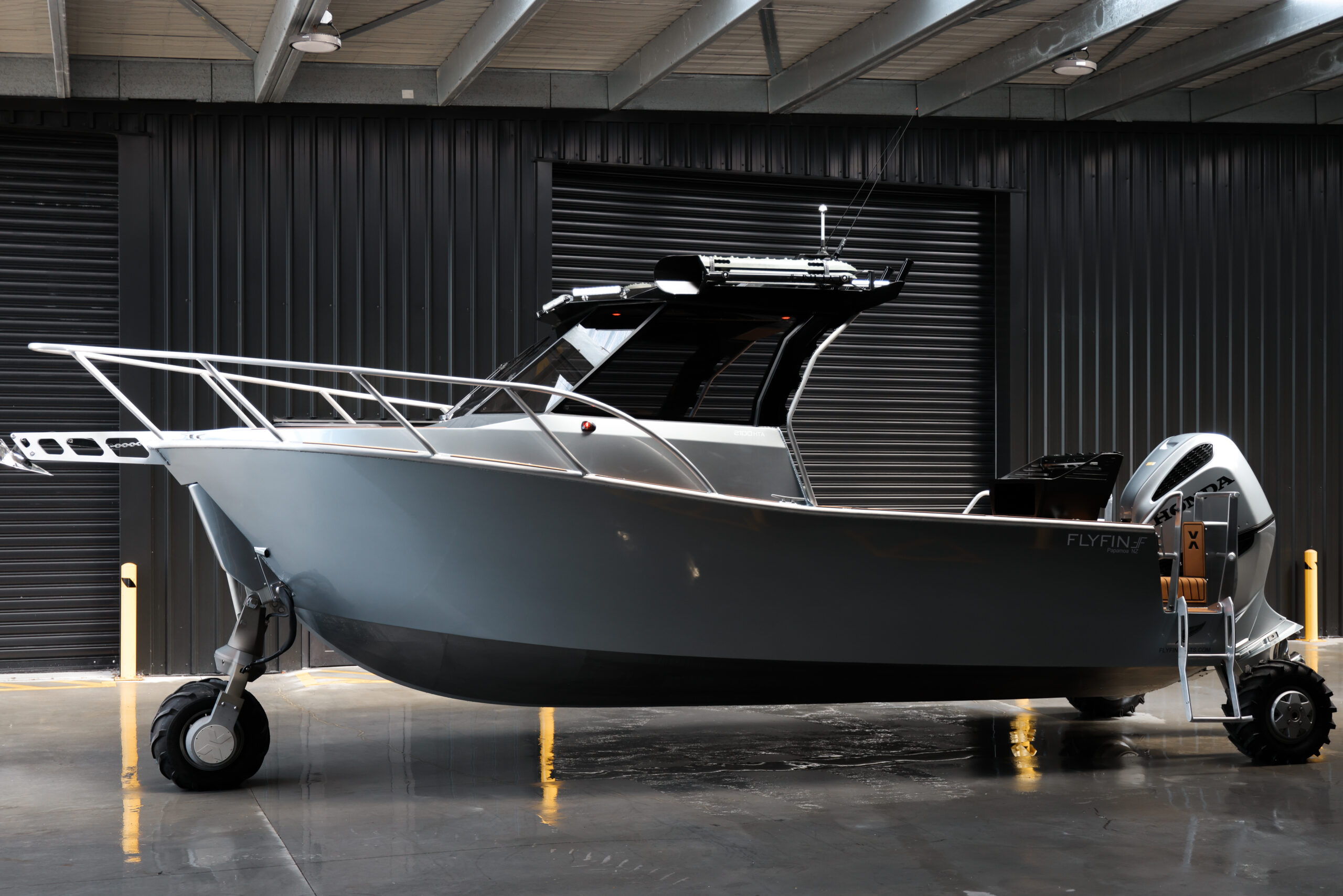The Flyfin Advantage:
Flyfin: The New Zealand Electric Advantage
Revolutionary Tectrax System
Flyfin’s proprietary electric Tectrax system represents a quantum leap forward in amphibious boat technology. This innovative New Zealand-engineered solution delivers:
- Unmatched Precision: Electric control allows for millimeter-accurate positioning
- Silent Operation: Perfect for approaching spooky fish in shallow waters
- Instant Response: No lag time between input and action
- Weather Independence: Reliable performance in all New Zealand conditions
New Feature Spotlight: Smart Power Management
Flyfin’s latest innovation includes an advanced Smart Power Management System that:
- Automatically optimizes battery usage based on conditions
- Provides real-time range calculations
- Offers multiple power modes for different fishing scenarios
- Includes regenerative charging capabilities during trolling
Built for Kiwi Conditions
Practical Design for New Zealand Waters:
- Engineered specifically for New Zealand’s diverse marine environments
- Handles everything from shallow estuaries to open coastal waters
- Designed by anglers, for anglers who understand local conditions
- Tested extensively in New Zealand waters
Clean and Spacious Layout:
- Maximized fishing space through efficient electric system design
- No hydraulic lines cluttering the interior
- Clean, unobstructed deck space for casting and fighting fish
- Thoughtful storage solutions for all your fishing gear
Unmatched Craftsmanship and Build Quality
Flyfin’s commitment to excellence shows in every detail:
Superior Build Process:
- Precision manufacturing using advanced composite techniques
- Quality control standards that exceed marine industry norms
- Each boat hand-finished by skilled New Zealand craftsmen
- Rigorous testing protocols ensure reliability
Finishing Excellence:
- Gel coat finish quality unmatched in the industry
- Attention to detail in every fitting and component
- Premium materials chosen for New Zealand’s harsh marine environment
- Warranty and support that reflects confidence in build quality

